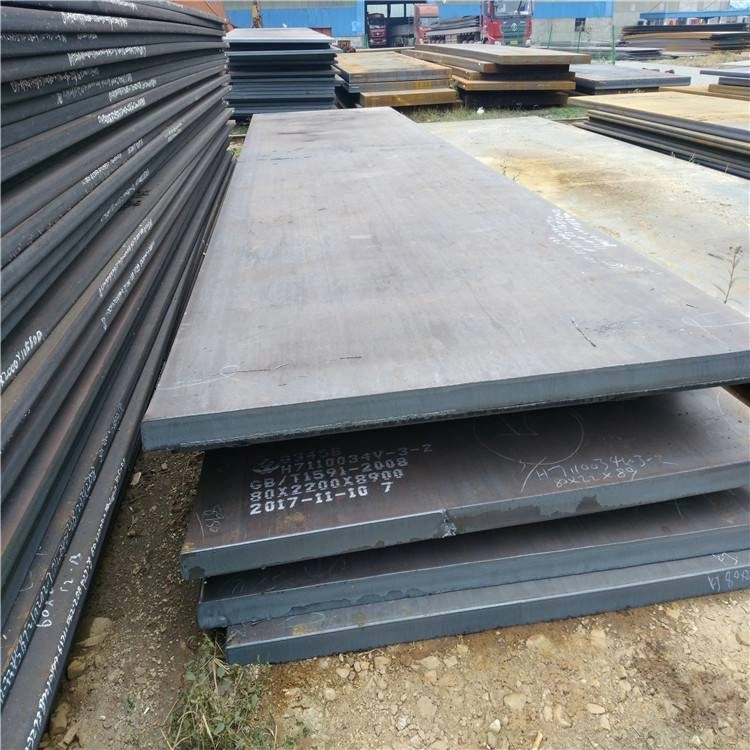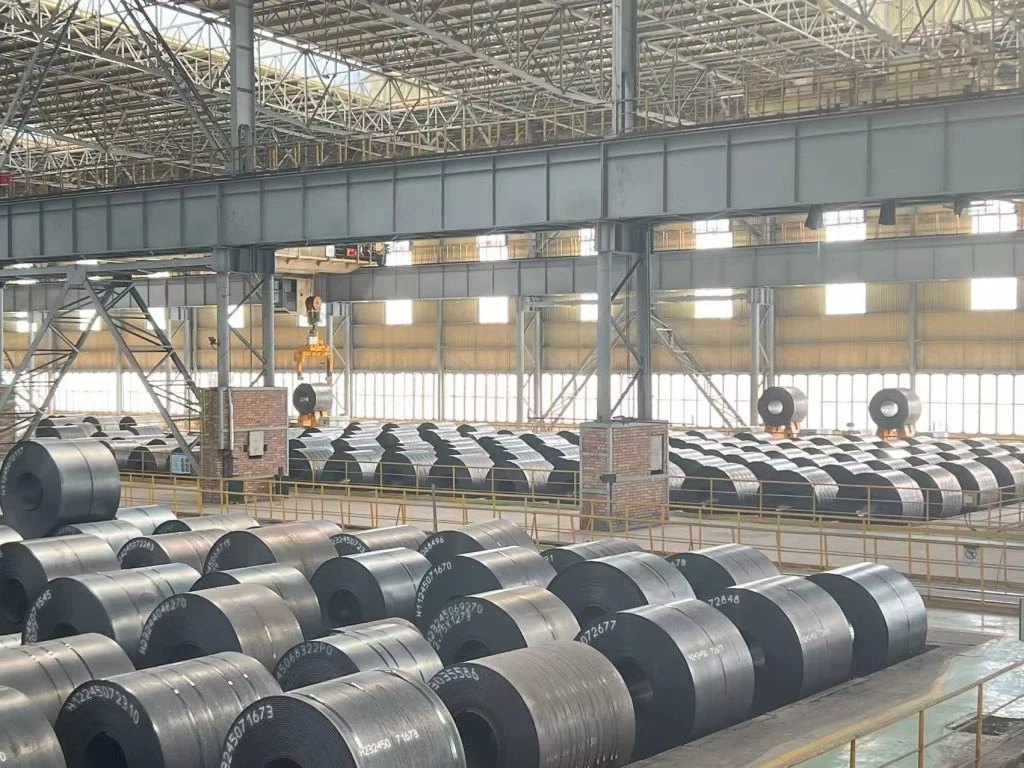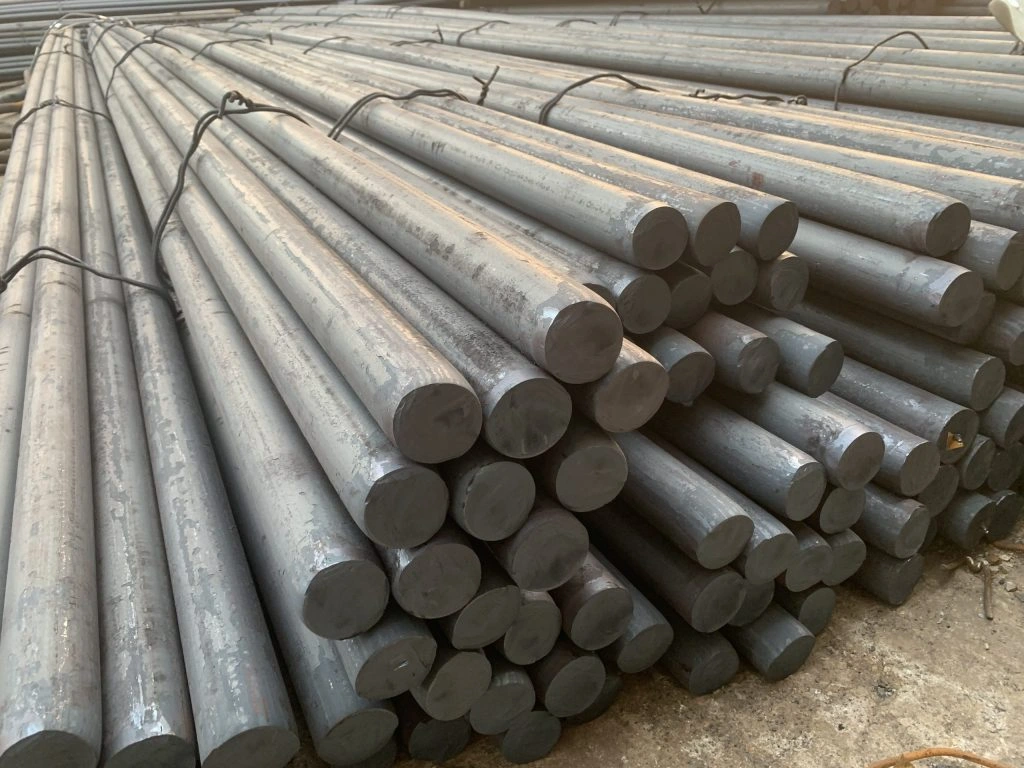The Structure and Magnetic Behavior of Carbon Steel
Carbon steel consists of iron and carbon. Usually contains between 0.05 % and 2 % carbon content. The magnetic characteristics of carbon steel are greatly affected by this composition. The atomic structure of carbon steel takes on a crystalline form either body-centered cubic ( BCC ) or face-centered cubic ( FCC ) which is crucial in determining its properties. When thinking about carbon steel plates it’s important to understand that the way they are structured and the amount of carbon they contain can lead to levels of magnetism which can impact how useful they are, in uses, like being used as reinforcing steel.
Body-Centered Cubic (BCC) Structure
In carbon steels containing, the predominant crystalline structure is the body-centered cubic (BCC) phase where each iron atom at the center of the cube is surrounded by eight neighboring atoms situated at the corners of the cube itself. The BCC configuration displays properties such as strong ferromagnetism exhibited by iron in this form making it easy to magnetize which is advantageous, in scenarios demanding robust magnetic reactions. Moreover‚ with carbon content‚ the BCC structure’s stability remains unchanged‚ preserving its magnetic characteristics and suitability, for a range of industrial applications.
Variations in Carbon Steel Grades
Different types of carbon steel exist which are classified such, as carbon steel with 0. 30 % Carbon content, and carbon steel ranging from 0. 30 % to 0. 60 %. High carbon steel with more. Low. Carbon steels are known for their ductility and magnetic properties for uses like making steel plates while medium. Carbon steels offer a balance of strength and ductility that is ideal, for high. Stress applications. Steels, with a carbon content of over 0.60% are tougher and offer resistance to wear and tear; however, they may lose some of their magnetic properties due to changes in their structure. The choice of grade is typically based on the need for reinforcement steel, for construction or manufacturing purposes.
Factors Influencing Magnetic Properties of Carbon Steel
The magnetic characteristics of carbon steel are affected by factors such, as how it’s processed and the addition of different elements and heat treatments applied to it. Knowing how these factors affect carbon steel can help improve its performance in use.
Impact of Machining and Grinding
The magnetic features of carbon steel can be modified by using machining and grinding methods which alter the surface properties of the steel and may affect its domains in turn. When machining occurs the external pressure applied to the material plays a role, in aligning iron atoms within the structure thus influencing its behavior. Understanding how these procedures impact the steel is crucial when determining its suitability for applications in components where specific magnetic traits are crucial, like magnetic sensors or electric motors.
Heat Treatment Effects
Heating treatment plays a role, in altering the characteristics of carbon steel by using methods like quench and temper to modify the steel microstructure and impact its hardness and magnetic qualities. The process of quenching can shift the structure from austinite to form which in turn changes its magnetism profile and needs to be considered for applications requiring magnetic attributes. Moreover, it’s important to note that various heat treatment techniques can result in levels of saturation which holds significance, for applications involving strengthening steel in concrete structures.
Differentiating Between Magnetic and Non-Magnetic Alloys
Some types of metal blends have the power to change how carbon steel acts magnetically to an extent. The introduction of components such, as nickel and chromium can produce versions of steel that are not magnetic. While carbon steel generally maintains its properties on its own it’s crucial to comprehend the makeup of steel mixtures to select the material for a specific project. When we talk about adding reinforcement steel to structures for needs, like magnetic properties in some cases and nonmagnetic qualities in others; using magnetic steel is helpful, for the former while opting for alternative alloys containing carbon steel with specific alloying elements may work better for the latter.
In essence, It’s important to comprehend the traits of carbon steel and the elements that impact them when choosing the material, for different engineering and industrial purposes. Each attribute and factor contributes to the effectiveness and practicality of carbon steel plates and reinforced steel ranging from the body-centered structure to the effects of processing methods. Understanding these aspects assists professionals, in making informed choices in their domains.
Practical Applications: When Is Magnetic Carbon Steel Beneficial?
Used in Engineering and Construction
Magnetic carbon steel is commonly used in engineering and construction for its beneficial properties, for a wide range of applications. The magnetic properties of carbon steel can play a role in improving load transfer and bonding within structures when used as reinforcement material in construction projects like buildings. Furthermore, the magnetic characteristics are often considered by engineers when selecting the grade of carbon steel plate to enhance the durability of structures such, as bridges and tall buildings.
Furthermore, the magnetic properties of carbon steel are also utilized in efforts to prevent theft. Elements constructed from carbon steel can be designed to interact with sensors resulting in a security alarm system that’s efficient, in safeguarding valuable items. Hence comprehending the characteristics of carbon steel is crucial, for engineers, architects, and construction supervisors looking for robust solutions supported by cutting-edge material features.
Electromagnetic Applications
Magnetic carbon steel is not used in construction but also finds important roles, in electromagnetic systems such as transformers and electric motors magnetic field components due to its ferromagnetic properties that help boost magnetic flux efficiently with minimal energy loss—a preferred material, in electrical engineering applications.
In the telecommunications industry carbon steel parts are often utilized in antennas and transmission systems due, to their properties The usage of these materials requires a strong knowledge of how electromagnetic fields interact with them to enhance signal quality and strength As technology progresses the need for magnetic carbon steel in these sectors not only emphasizes its practicality but also underscores its vital contribution, to contemporary engineering solutions.
Qingdao Sunrise New Material Co., Ltd: Pioneering Advanced Materials
Company Overview
Qingdao Sunrise New Material Co., Ltd is a player in the field of metallurgy. Focuses on producing and distributing a variety of carbon steel goods with a commitment to excellence in materials production. The company was founded to deliver top-notch materials. It has become known for its approaches to meeting the needs of various industries. By prioritizing quality assurance and ensuring customer satisfaction QINGDAO SUNRISE has built a reputation. Successfully expanded its reach in markets both at home and abroad.
The company utilizes cutting-edge technology. Upholds manufacturing standards to guarantee that every item meets industry requirements. By engaging in research and development efforts Qingdao Sunrise demonstrates its dedication to enhancing material technology in line with developments and market needs. The emphasis on sustainability and efficiency highlights their commitment to creating top-notch carbon steel that fulfills the demands of today’s society.
Products Offered by Qingdao Sunrise New Material Co., Ltd.
High-Quality Carbon Steel Plates
The carbon steel plates produced by Qingdao Sunrise New Material Co., Ltd are renowned for their strength and dependability in industries such as engineering and construction. They offer a thickness range from 0..03 to 100 mm. Can be tailored to meet client needs whilst meeting global standards like ASTM and DIN for quality assurance. This ensures that the plates are versatile enough to be used in applications ranging from automotive to machinery.
Besides being strong and dimensionally stable the carbon steel plates from the company go through surface treatments like oil application and passivation to improve protection against rust. This comprehensive manufacturing process guarantees that customers get a product that’s not suitable for short-term use but also has the durability to withstand harsh environmental conditions in the long run. By choosing Qingdao Sunrise carbon steel plates customers can expect performance, in any application they are used for.
Reinforcements for Construction Industry
QINGDAO SUNRISE NEW MATERIAL CO., LTD provides high-quality reinforcement steel for projects that aim to improve the strength of structures. This steel is meticulously crafted to maintain size and properties, for project needs.. With a range of grades, it is ideal for use in challenging settings where mechanical strength is crucial and plays a vital role in construction projects requiring resistance to deformation, under heavy loads.
Furthermore, the company follows testing protocols that adhere to standards to ensure the dependability of its reinforced steel. This meticulous approach does not meet construction regulations. Also, inspires trust in engineers and builders regarding their material selections. Qingdao Sunrises’ dedication to using top-notch carbon steel for reinforcement further demonstrates their commitment to providing strong construction solutions ultimately enhancing safety, in buildings worldwide.
To sum up, the in-depth knowledge of the properties of carbon steel and its real-world uses in engineering, building, and electrical systems highlights its importance in today’s sector. With industry leaders, like Qingdao Sunrise New Material Co., Ltd. Leading the way the evolution of material technologies is transforming sectors that depend on steel, guaranteeing…









